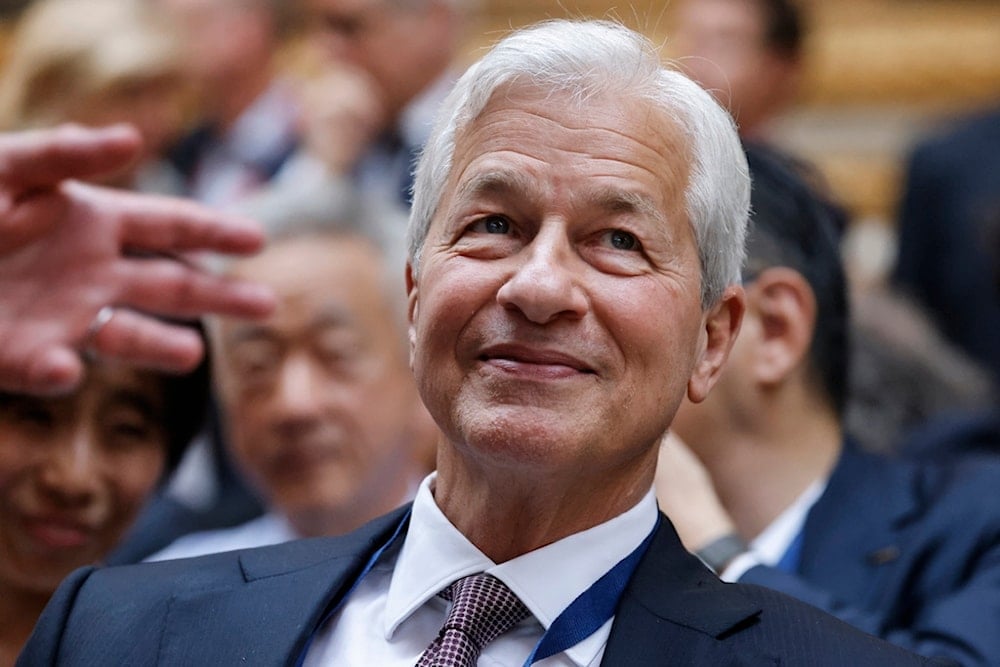JP Morgan CEO says US economy could head toward stagflation
Jamie Dimon warns of the possible stagflation of the US economy amid the current uncertainties and instability.
-

CEO of Chase Jamie Dimon looks on during the seventh "Choose France Summit", aiming to attract foreign investors to the country, at the Chateau de Versailles, outside Paris, Monday, May 13, 2024. (AP)
The worst-case scenario for the United States' economic future is stagflation, JP Morgan Chase CEO Jamie Dimon recently stated.
Economic stagflation entails a country's chronic inflation, accompanied by high unemployment rates and slow growth.
Speaking at the Council of Institutional Investors in New York on Tuesday, Dimon said "The worst outcome is stagflation. And by the way, I wouldn't take it off the table."
Over the past year, the economy kept fluctuating, majorly due to the country's continued war spending, in light of the war in Ukraine and the Israeli war on Gaza.
In December, Federal Reserve Chairman Jerome Powell stated that while the current status of the US economy doesn't suggest a recession, uncertainties regarding growth and inflation make future developments unpredictable.
"I think there's always a probability that there will be a recession in the next year and it's a meaningful probability, no matter what the economy's doing, so it's always a real possibility. This result is not guaranteed. It is far too early to declare victory. And there are certainly risks. It's certainly possible that the economy will behave in an unexpected way. It has done that repeatedly in the post-pandemic period," he said.
Under Biden, US budget deficit hits historic high of $6.6 trillion
The United States' budget deficit has reached an all-time high of $6.6 trillion under President Joe Biden's administration, Sputnik estimated based on data obtained from the US Treasury Department.
Over the past three and a half years of Biden's presidency, the US government's expenses exceeded its revenues by $6.6 trillion, marking the highest deficit in the history of these records.
In 2021, the deficit stood at $2.8 trillion, or 13% of GDP. The following year saw a reduction to $1.4 trillion, or 6.3% of GDP, but increased again the year after to $1.7 trillion, or 7.6% of GDP. In the first half of this year, the deficit reached $758.2 billion, translating to 5.5% of GDP on a rolling annual basis.
For nearly a century, the US has consistently faced a chronic budget deficit, with the last extended period of surplus occurring from 1920 to 1930. After World War II, Harry Truman was the only president to achieve a budget surplus, from 1946 to 1950. The largest surplus recorded was during Ronald Reagan's presidency, totaling $1.34 trillion.
To manage its substantial budget deficits, the US relies on national debt, which in July surpassed $35 trillion for the first time and increased by an additional $160 billion just two weeks later.
The nonpartisan Congressional Budget Office (CBO) reported in June that the US national debt is on course to increase by 27% this fiscal year compared to earlier estimates.

 3 Min Read
3 Min Read








